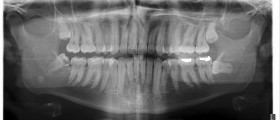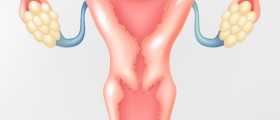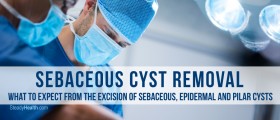Ovaries
The female reproductive system is remarkable. Every woman has the two ovaries on each side of the lower abdomen or pelvis and they have to role to produce an egg and release it into fallopian tube in order to be fertilized. Since the human body is susceptible to many diseases and disorders, the ovaries, too, can be affected. Ovaries are usually affected by the ovarian cysts.

Ovarian cysts
Ovarian cysts are growths that appear in the ovaries or on the surfaces of the ovaries. In the majority of cases, only one ovary is affected, but there are also cases when ovarian cysts appear in both ovaries simultaneously, although rarely. In most cases, ovarian cysts are benign growths and they are like small sacs filled with fluid. They are of different size and usually disappear on their own. Rarely, any medical treatment is necessary. However, there are few cases when the ovarian cysts are malignant and cause ovarian cancer, which spreads to the surrounding organs, such as the uterus and colon and can even reach the lungs.
When the symptoms of this disorder appear, they usually include acute pain and discomfort in the lower abdomen on one or the both sides, a feeling of heaviness, or pressure in the pelvic area and frequent urination, as well as nausea along with acute diarrhea.
Ovarian cysts types
There are several types of ovarian cysts.
- Functional cysts,
- Follicular cysts,
- Cysts following GnRH agonist treatment,
- Corpus luteum cysts,
- Theca lutein cysts,
- Benign cystic teratoma (Dermoid),
- Endometrioma,
- Serous cystadenoma,
- Mucinous cystadenoma.
Ovarian cysts and late menstrual period
The most important warning sign of the ovarian cysts is late menstrual cycle. Since the ovarian cysts tend to form themselves during a menstrual cycle, they can cause irregular menstrual periods that manifest through considerably early or late menstrual cycles. Furthermore, heavy and excessive bleeding, as well as menstrual cramping can be also triggered by the ovarian cysts. When the ovarian cyst is small, it does not cause much pain, but only late menstrual period. However, when it starts to grow the pain occurs.
When they are diagnosed by the means of ultrasound, many doctors prescribe contraceptive pills because they are very effective in treating the ovarian cysts. If the cysts do not disappear, the surgery is the option. Sometimes, it is even needed to remove the whole ovary. The most common surgical procedures that are employed when the ovarian cysts are in question are cystectomy, laparoscopy and laparotomy. Nowadays, many doctors recommend holistic way to treat the ovarian cysts, because by this method, the causes are eliminated together with the health problem, while the conventional methods only cure symptoms.

















Your thoughts on this
Loading...